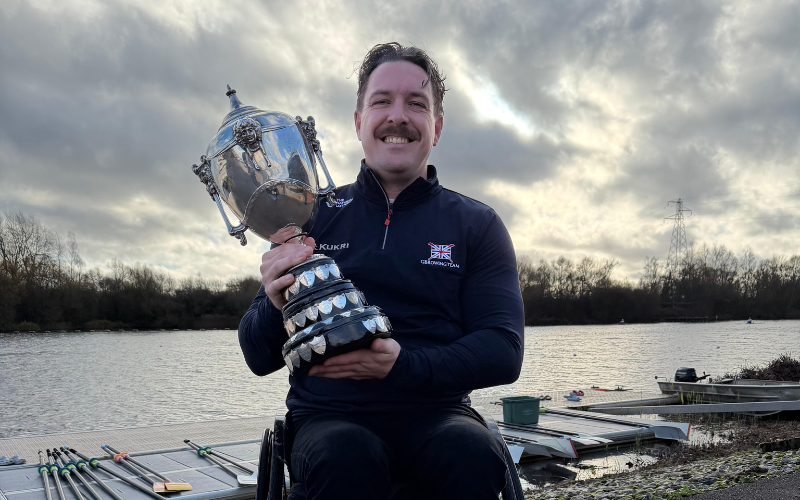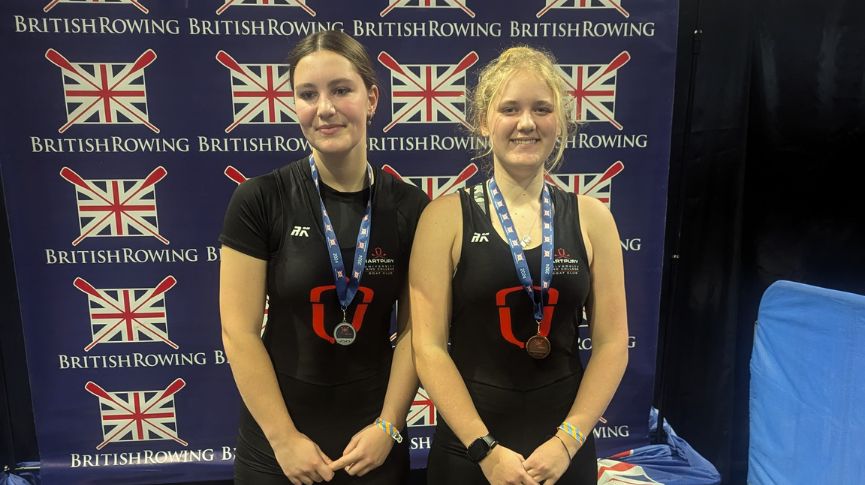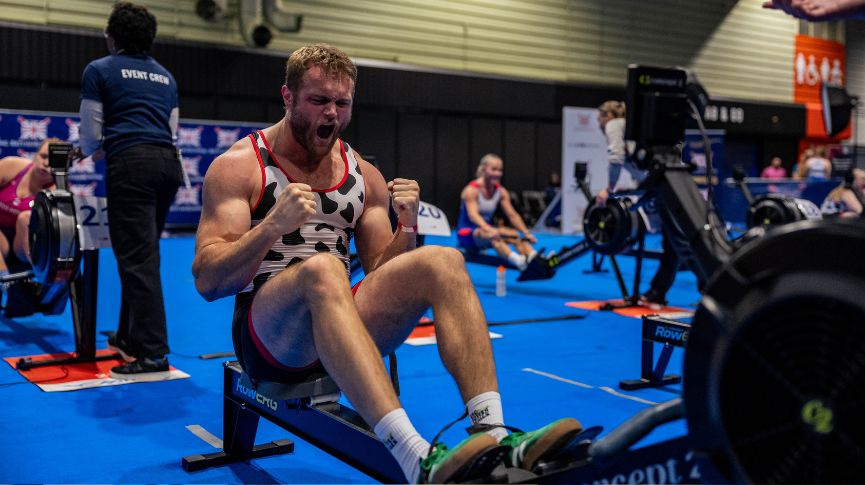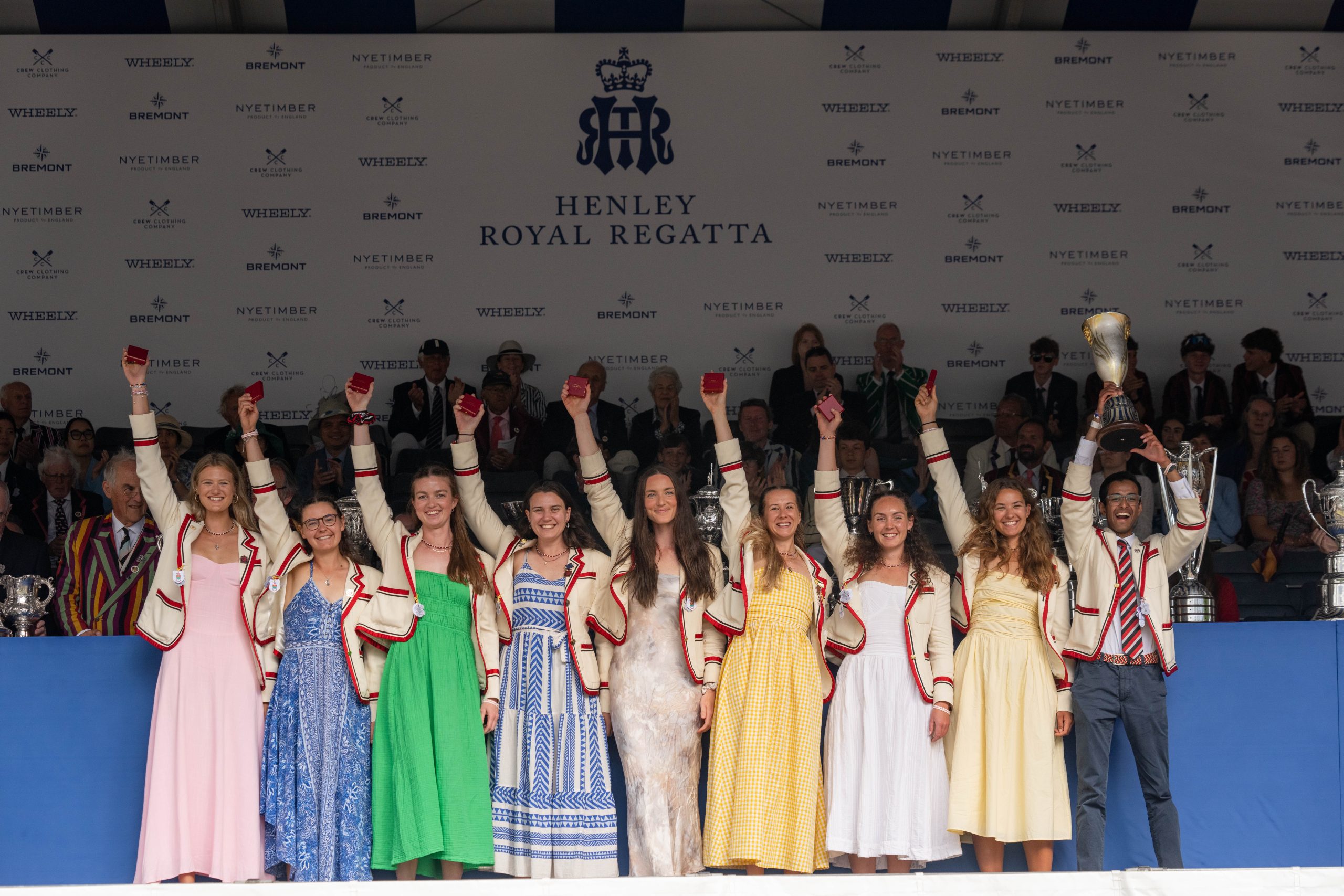RIP Ray Sims (1947-2024)
British Rowing was sad to hear of the death on 22 March of Ray Sims, the international lightweight coach and boat builder
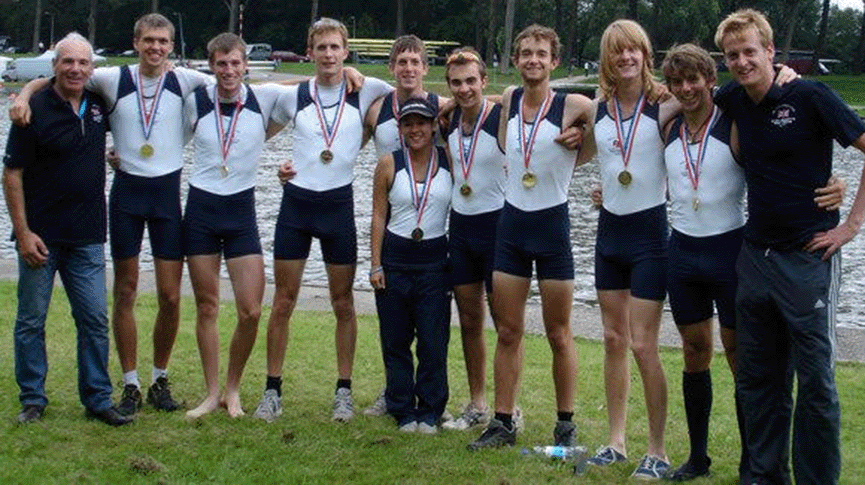
Ray (left) with assistant coach Dan Janes (right) and their Nottingham University Lightweight crew who won at EUSA in 2010.
Ray was born into the Sims boat building dynasty in London where his father (Roland Junior) and grandfather (Roland Senior) worked for the family firm George Sims and Sons of Putney. The family moved to Nottingham in 1955 so that Roly Jr could set up his own boat building business working out of Nottingham and Union RC.
Young Ray soon learned to scull and row at the club, and often trained with his younger brother Trevor in a double scull coached by their father Roly. Ray enjoyed his first major success at Wallingford Regatta in 1964 where won the Schoolboy Clinker Sculls. In 1967 he stroked the Nottingham and Union eight to the final of the Thames Cup at Henley Royal Regatta, where they lost to Cornell after leading them at the Barrier.
After a brief early career in insurance, Ray joined his father as an apprentice boat builder. He later set up his own company, based at Trentside North next to Nottingham Forest Football Club. Ray’s youngest brother Peter worked for the company as works manager and rigger maker whilst Ray’s mother Betty worked in the office until her retirement. Initially producing wooden boats, the progression to carbon fibre led to a shift in skillset that in later life would lead to him working within motorsport and providing innovative designs for aeroplane components.
Sims Racing became an extremely successful boat builders with their boats winning National and International titles over several decades. Sims boats were distributed across the world, and such was their reputation that whilst training at Holme Pierrepont prior to the London 2012 Olympic Games, the Japanese rowing team were keen to be photographed with him as many of them had rowed in his hulls! The company ceased trading in 2010.
Alongside developing his company, Ray started coaching in the early 1980s at the recently formed Nottinghamshire County Rowing Association (NCRA), which rapidly became a centre of excellence for lightweight rowing. His first major international success came in 1986 with the GB Lightweight double scull of Allan Whitwell and Carl Smith, who won gold at the World Championships in a Ray Sims-built boat, on their home course at Holme Pierrepont. The crew went on to win bronze at the World Championships the following year, again under Ray’s guidance.
Perhaps the most famous win for any of his crews was the epic 1989 final of the Ladies Plate when his lightweight NCRA eight beat Harvard – twice. Many will have seen the unforgettable photo of the Nottingham men in bright green Lycra celebrating crossing the line first and in record time, while the Harvard cox held aloft the tangle of fishing line that he had just dragged off his boat’s rudder. It was clearly a huge credit to the strong culture that Ray had instilled in the crew that they beat the American heavyweights for a second time – despite only being called by the Stewards to re-row the race after the champagne had started to flow – and in the process lowered the course record for the event by another two seconds.
His NCRA Men’s lightweight eight went on to win bronze at the World Championships in 1990, after which Ray was appointed Chief Coach for the GB Lightweight Men for the 1991 season. He worked with Allan Whitwell to coach the NCRA crew of Chris Bates, Carl Smith, Tom Kay and Toby Hessian who won the Lightweight coxless four at the World Championships that year and again in 1992.
Ray had a major hand in the success of Peter Haining. Peter had been part of the legendary NCRA Ladies Plate crew in 1989, but caused frustration by regularly turning up late for training. His lack of punctuality persisted despite being thrown into the lake as punishment and eventually Ray removed Haining from the eight due to his unreliability and offered him the challenge of the single instead. Huge success followed with Haining later becoming three-time World Champion in the Lightweight men’s single scull from 1993 to 1995. Haining became a huge part of Ray life and Ray was best man at Haining’s wedding in 2012.
Following a spell as Chief Coach for Rowing Ireland for the Sydney Olympics in 2000, Ray’s final international role was helping coach Tom Kay to a Silver medal in the Lightweight Single at the 2003 World Championships as part of a coaching team that included two members of the 1989 Ladies Plate crew, Marysh Chmiel and Carl Smith.
Ray was regarded as a highly technical coach. A key feature of his technical approach was built around the stroke’s finish to ensure the hull avoided any pitching or checking. Perhaps ahead of his time, he also realised the importance of athlete management – and drew parallels between this and running a business. Haining explains, “Sims had an incredible brain that thought completely outside the box. He had a phenomenal gift for hand gestures that completely told the shape of the stroke and an ability with words that complemented these. With incredible passion to check that those words and gestures were understood.”
In later life Sims returned to coaching with Nottingham University, coaching numerous BUCS and EUSA-winning crews there.
After being diagnosed with prostate cancer in his 60s, Ray sought regular alternative health remedies in the Philippines, where he emigrated in 2012. He is survived by his wife Cecil and his three children Catalya, Alyza, and Zack, as well as his brothers Trevor and Peter.


